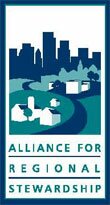 |
||
Seasonal Pests: What to Watch Out for in Each Time of YearPest pressures change with the seasons. Warmer months typically bring increased ant and mosquito activity, while cooler weather drives rodents and cockroaches indoors in search of shelter and food. Addressing moisture issues early—such as fixing leaks and improving drainage—reduces attractants and can lower the risk of infestations. Maintaining door sweeps and sealing gaps helps limit entry points. Consistent sanitation practices, combined with continuous monitoring, can help detect issues quickly. When treatment is needed, targeted applications designed to provide residual control for up to 90 days can interrupt pest life cycles and reduce reinfestation. If you notice indicators such as droppings, gnaw marks, grease trails, nest materials, live insect activity, or standing water, consider acting promptly to prevent escalation. Understanding Seasonal Pest SurgesPest activity fluctuates throughout the year with temperature and humidity. The most pronounced increases typically occur in spring and summer. Warmer conditions accelerate breeding and foraging: ants and termites expand colonies, and mosquitoes, ticks, and flies benefit from higher humidity and available breeding sites. Early preventive steps include eliminating standing water, trimming vegetation away from structures, and storing food in sealed containers. As temperatures decline in fall, many pests—particularly mice and rats—seek indoor shelter. Focus on exclusion by sealing gaps and cracks, repairing screens, and reducing clutter that provides harborage. In winter, rodents and some indoor-adapted insects, such as cockroaches, can remain active inside. Maintain routine pest management during this period. An integrated approach is most effective year-round. Combine monitoring (inspections, traps), sanitation (removing food and water sources), exclusion (sealing entry points), and targeted treatments as needed. This strategy reduces reliance on broad-spectrum pesticides and helps prevent recurring infestations. Early Leak Detection SavingsEarly leak detection reduces repair costs, water waste, and secondary damage. Addressing small leaks promptly can help homeowners avoid an average of about $2,500 in water damage repairs and lower water bills by up to 10%, according to industry estimates. Timely action also limits conditions that allow mold to develop, which can be expensive to remediate. Practical steps include:
These measures help control costs, conserve water, and reduce the likelihood of major failures. Door-Sweep Sealing ChecklistEffective door-sweep installation and maintenance can reduce drafts and limit pest entry. Use this checklist to assess and improve door sealing:
Hawx Pest ControlHawx Pest Control provides continuous oversight of pest activity, issuing real-time alerts and enabling prompt responses to emerging issues. The system adapts to seasonal and environmental changes, using sensors and analytics to track movement and behavior patterns. It supports prevention by identifying activity on the exterior and interior of the property, highlighting conditions that may attract pests, and informing timely control measures throughout the year. Routine inspections help locate entry points and other vulnerabilities, allowing for targeted interventions. Continuous monitoring can limit property damage, reduce potential health risks associated with pests, and keep occupants informed about activity and recommended actions. Effectiveness: 90-Day ResidualA 90-day residual treatment continues to work between service visits by repelling and killing targeted pests for up to three months after application. This provides ongoing protection that can help limit re-infestation during periods of increased pest activity. Using a residual product on this schedule may reduce the need for frequent reapplications and support a more consistent level of control. Actual performance depends on factors such as humidity, temperature, surface type, application method, and the pest species present. Pairing residual treatments with regular inspections improves outcomes by identifying new activity, verifying coverage, and allowing timely adjustments to products or application areas. Together, these practices provide a systematic, cost-conscious approach to managing infestations. |
Gain access to practical insights, advice, ideas, and cutting-edge practices from around the country. ARS is the nation's premier peer-to-peer network of civic entrepreneurs working to build vibrant, globally competitive regions. |
|
|
Alliance for Regional Stewardship |
||
